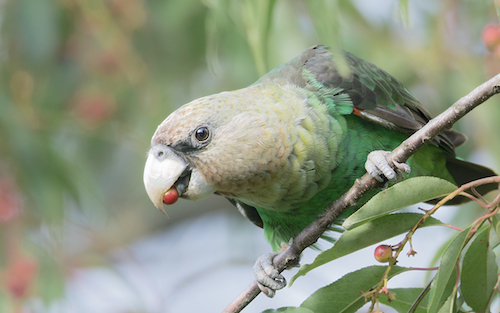Next week countries from around the world will gather in Geneva to discuss ways to manage the global trade in endangered wildlife. On the agenda is the trade in African Grey and Timneh Parrots following the decision by CITES to end legal international trade in wild parrots last year. This was a huge step forward for the Parrot’s protection, and countries will be gathering to discuss the impact of the decision and ways to improve its implementation.
This meeting comes just as a new peer-reviewed study of trade in Grey Parrots has been published by the World Parrot Trust. The most comprehensive analysis of its kind, the study reveals that a staggering 1.2 million African Grey Parrots were legally exported between 1978 and 2014. By exploring shifts in networks of trade, it examines the ways in which imports and exports shifted between countries (while listed under Appenidx II of CITES) in response to new regulations, collapses in wild populations and a rapidly changing global economy.
The study also highlighted how efforts to protect wild populations in some areas have been undermined by the ease with which Grey Parrots could be laundered through neighbouring countries, as well as how export quotas could be exceeded and permits falsified. While the CITES decision last year, to bring an end to the legal trade in wild Greys, has done much to close these loopholes, illegal trafficking remains a threat without effective enforcement.
Further, recent research by the World Parrot Trust and partners has highlighted on-going illegal exports from the Democratic Republic of Congo, and other countries. The actions of illegal traffickers are undermining local efforts to protect wild parrots, such as those in eastern DRC and neighbouring Congo. While there are encouraging signs that the situation is improving, this is not the time for complacency and next week the World Parrot Trust will be in Geneva to share our research and work with others to encourage CITES Parties to take a strong stand against illegal trafficking.
The new study is published as part of a special issue on parrot ecology and conservation in the ornithological journal Emu. It can be accessed at the link below or request a copy from [email protected].
http://www.tandfonline.com/doi/abs/10.1080/01584197.2017.1369854?journalCode=temu20
_Dana_Allen.jpg)
© Dana Allen | http://www.photosafari-africa.net
_Lukuru_Foundation.jpg)
© TL2/Lukuru Project.jpg
The taxonomy of one of South Africa’s most iconic birds, the ‘Green and Gold’ Cape Parrot, appears finally to be settled, with various national, regional, and international bodies reaching consensus that they should be considered a distinct species.
'Cape parrots', which will be known as Poicephalus robustus and are restricted to South Africa, were previously lumped together by some authorities with the Brown-necked parrot (Poicephalus fuscicollis) which has a wide-ranging distribution in sub-saharan Africa.
As a result the new species will be evaluated for the IUCN Global Red-List of Threatened species, which categorises species based on their level of endangerment. Input in this process is currently being solicited by BirdLife International.
Cape parrots are fortunate to have a number of passionate individuals and groups working hard to protect populations, restore habitat and secure their future in South Africa. More information on these efforts can be found in an article in the Spring 2017 issue of the World Parrot Trust's magazine PsittaScene.


